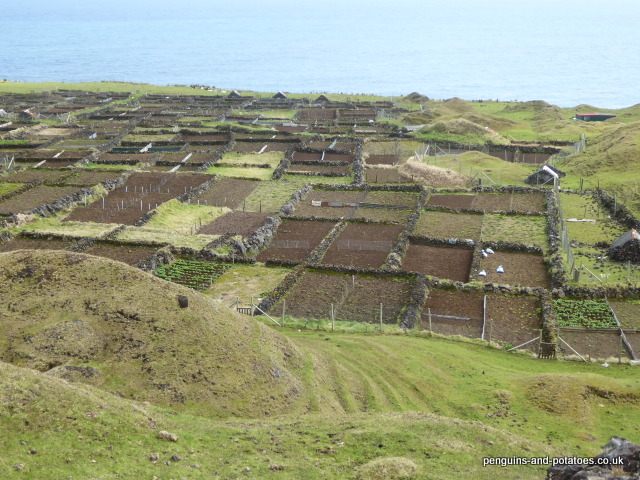Tristan da Cunha is a tiny volcanic island deep in the South Atlantic, at around 37o south. The nearest land is Cape Town, some 1,600 miles to the east. It has a population of 260 people. Tristan was first occupied by a British garrison in 1816, and today it is one of the British Overseas Territories. In 1961 the island was evacuated because of the volcano coming to life, the population spending 18 months in Britain until they were able to return. The island is known as being the most remote inhabited island in the world.
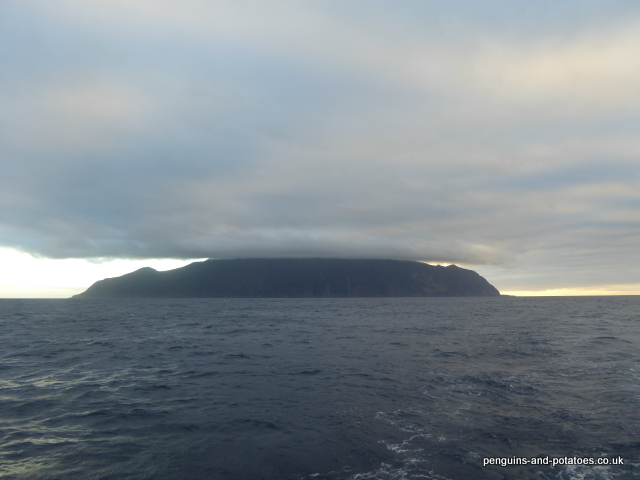
In November 2016 I travelled out to Tristan to take up a 2-year contract as Agricultural Adviser to the Government of Tristan da Cunha. The central objective was the increase of island food production, for strategic and economic reasons. Technical advice and advocacy are the two pillars of my work here.
The long-existing agricultural enterprises are cattle, sheep and potatoes, plus some vegetables and a little fruit. There is much improvement to be made in all these enterprises. My brief also included the promotion of some quite fanciful ideas, including for example the commercial development of tea, and truffle production. I am pleased to be able to report that I have had agreement on the abandonment of these peripheral ideas, and we are concentrating on a ‘back to basics’ approach in the interests of food security and sustainability.
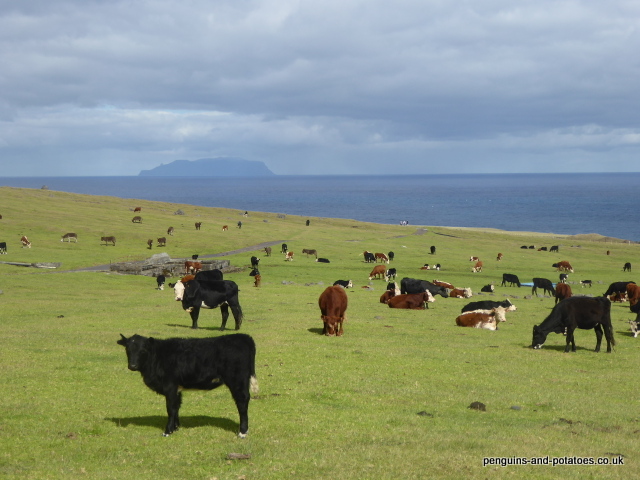
The main problems being faced can be categorised as being Logistical, Technical, Climatic and Cultural. The Cultural issues have developed as a result of the community on the island having very little contact with the outside world for most of its 200 year existence. Whereas in the early days the island was visited by whalers and seal hunters, these visits died out as a result of over exploitation of these natural resources, and in some years not a single ship visited. Because of the isolation, the spread and adoption of new ideas is naturally very restricted.
The climate can be described as temperate maritime, but this generalisation does not convey the day-to-day reality of the weather and of the way in which the weather plays a pivotal part in limiting farming options. Summer temperatures can range from 16 to 28oC, and although the climate is wet there can be prolonged dry spells in the summer. Winter temperatures range from 4 to 16o. There is great variety in the weather, with sometimes a few spring-like days in the middle of winter, and vice versa. However, one of the most significant weather elements is the wind; at any time of the year the island can have 5 or 6 days in which storm-force winds blow without a break, most often accompanied by heavy rain. Rains in the last 12 months have resulted in some serious flood damage, a combination of erosion and alluvial deposits being washed down from the high ground accounting for the loss of some 10% of the available pasture land, which previously amounted to around 400 hectares. Most crops need shelter from the wind to survive.
The logistical problems all relate to the extreme remoteness of the island. There is no airport, and only some 8 visiting cargo ships each year. The ships come from Cape Town, with a crossing time ranging from 6 to 15 days. These bare facts point to one of the main problem areas, which is that it takes a very long time for orders placed to arrive on the island. This impacts on obtaining, for example, machinery spares, medicines and other urgent supplies – indeed some orders originating in the UK can take more than 9 months to arrive. The price of everything coming to the island is augmented by shipping costs, and as may be imagined there has developed a strong ‘make do and mend’ attitude.
The very limited land area is generally poor, boulder-strewn ground which is not ploughable. This has become ‘pasture’ by the colonisation of kikuyu grass which of course is low in production and low in digestibility, as well as a range of other low performing weed grasses. As with most soils of volcanic origin, the soil pH is very low – 5.2 to 5.8. No lime has been applied since the early 1970’s. We now have lime ordered and received, and we have started lime spreading, as the beginning of a programme which should be repeated annually if funds permit. We also aim to reseed some of the pasture land; this will be done by spraying off the surface vegetation with glyphosate, and using a tined pneumatic seeder to sow a mixture of grasses that has been prepared for these conditions by a specialist seedsman in Scotland. The seeded surface will be rolled using a home-made roller made of two written-off gas cylinders filled with concrete.
During the winter months, the livestock that are dependent on the grazing have a hard time. In round figures we have a total herd of 420 single-suckled cows and followers, and around 800 sheep. There is no grass conservation, and it is illegal to bring in hay because of the high risk of bringing in hitch-hikers, both alien plants and alien insects. The worst year for the cattle was in 1906, when numbers had been allowed to climb to around 700, and a hard winter resulted in 364 deaths.
The sheep tend to have an easier time than the cattle do, because they are able to graze the upland areas where there is much less grazing competition. Sheep are kept primarily for meat, but the wool is also important. There is a significant cottage industry of carding, spinning and knitting, with a range of quality woollen items being sent to customers around the world.
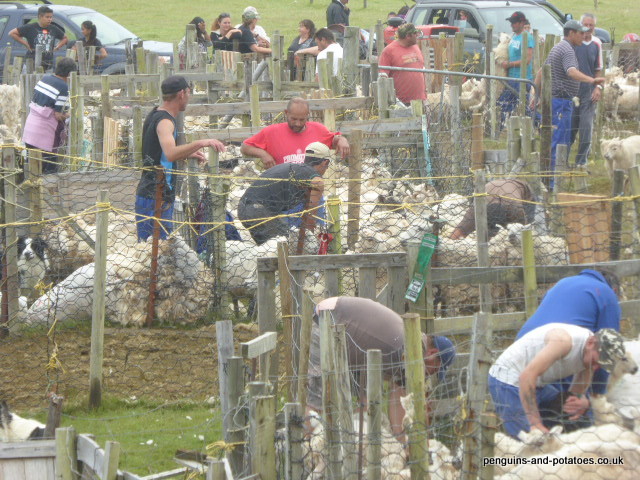
We managed to do an AI programme with the cattle last February, and if all goes well we hope to introduce new blood into the sheep flock next year. Nothing is ever simple, and both cattle and sheep are privately owned by individual families on quota systems. The management decisions that would be relatively easy with a co-operative or with an owning company, for example to reduce the herd size in order to reduce overgrazing, are exceptionally difficult here. Although there seems to be increasing awareness of the need to reduce stock numbers, the suggestions that have been made of meaningful changes to how things are done have not met with agreement from the islanders themselves.
In small, enclosed garden areas there is some production of vegetables, and there are two home-made greenhouses that are used for the propagation of seedlings and for the production of tomatoes and cucumbers. Garden areas have to be sheltered from the wind, and New Zealand flax is extensively used for wind breaks. The climate is such that some crops, notably kale and cabbage, will grow throughout the year. There is some advantage in growing crops in the winter months because then there are no damaging insects. There are two particular insect pests that cause great damage in the summer months – these are the diamond backed moth in the outside areas and the whitefly in the greenhouses. These are both alien species that arrived on the island in recent years, but they have no predators here – no predating insects, no hedgehogs, no insect-eating birds. As a result these two pest species can rapidly multiply out of control, particularly since they arrived here with well developed resistance to insecticides.
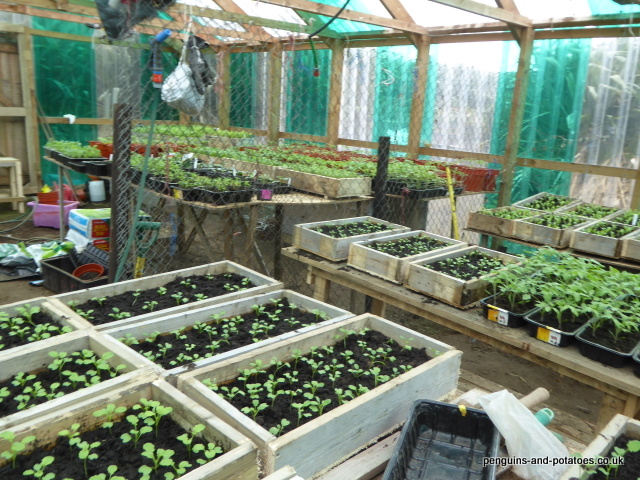
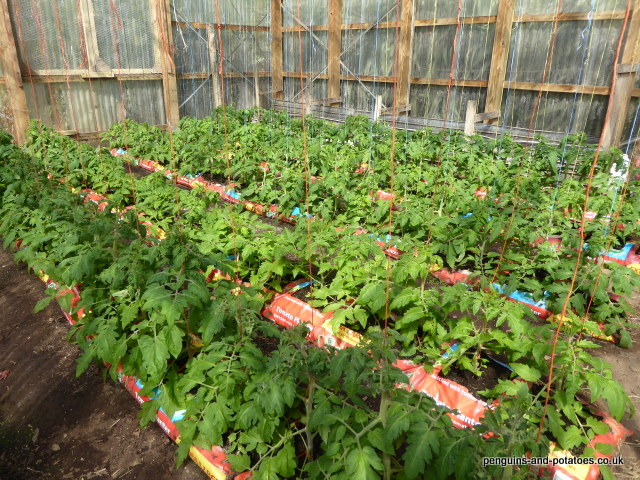
Potatoes have been grown on the island since the arrival of the first settlers. They are grown in small wall-enclosed areas (‘The Potato Patches’) that closely resemble the ‘kale yards’ that are to be found in the Orkney Islands and in the Outer Hebrides. Each family has a number of Patches, where they grow their own crop. It would surprise all potato-growing farmers around the world to know that the potatoes are grown on the same ground year after year, with no rotation, but for some reason this gives reasonable results here on Tristan. There are good years and not-so-good years, but in a good year surplus potatoes are sent off to St Helena, as part of a good-will exercise. There seems to be a degree of vulnerability in growing potatoes with no rotation, and in order to try and develop the protocol for growing an alternative carbohydrate crop we are about to try cultivating sweet potatoes, which of course are not susceptible to the same pests and diseases as the standard potato.
